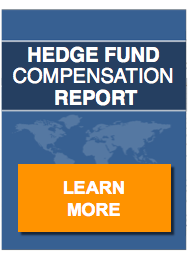A hedge fund manager’s model needs to do two very important things besides its principal purpose of finding ways of growing investments in excess of market conditions. It also has to find a way of rewarding the sharp operator who developed it and marketed it. And it also has to have a mechanism for returning profits to investors at the time and in the proportion they demand it. You’d think this would be the easy, non-controversial part. It isn’t.
Making money running a hedge fund comes down to what it always has: collecting a fee for accumulating assets under management, and a performance fee for any investment returns which beat the S&P 500 or some other broad-market metric. The traditional 2% of the former and 20% of the later might be under pressure, but is it going away?
“No, it is not dead, but many of the start-up funds are either reducing the management fee or eliminating the management fee,” says Joe Goldstein, New York-based CFO of HedgeCo Networks and senior manager at its G&S Fund Services subsidiary.
There are market pressures, that is to say, supply and demand, driving this erosion. Big funds and bigger banks are laying off savvy securities analysts and giving them the kinds of packages which afford them the runway they need to start their own funds. So there are now almost as many funds as there were pre-recession, but only a limited amount of post-recession money to go around. This doesn’t bode well for start-ups.
“There’s a good number of funds that are shutting their doors … several months post-launch,” says Trevor L. Zeh HedgeCo’s Florida-based head of start-up consulting.
Zeh notes that the young firms that are keeping their lights on tend to be doing so with the help of credible, experienced fund administrators, auditors, attorneys and other back-office professionals.
With that in mind, it’s important not to trade away your greatest value in the eyes of the investment community: your fund’s ability to monetize.
Liquidity may be one attractor to hedge funds as opposed to other investment vehicles, but to say hedge funds are liquid investments is to overstate the case. Lockups and redemption periods are part of the landscape, and the people writing the checks have come to expect to see some lockups and redemption notice periods stated up-front. They don’t necessarily like them, but understand they come with the territory.
And these conditions make sense. Nobody day-trades in hedge funds, even if the hedge funds’ own strategies are to day-trade. As a buy-sider, you expect your money to be tied up for three to six months from that date when you first commit capital, even if you expect to be able to take any or all of it out whenever you want after that date. Also, you understand that you can’t just walk into a fund manager’s office, ask for your billion dollars back, “now if you please,” and expect this person to send it to you instantaneously via PayPal.
It takes time to unwind a position to make a big payout, and that just goes without saying. What doesn’t go without saying is the definition of “time to unwind a position.” To that end, it’s good practice to have a predetermined period specified at the get-go.
What they object to is the way fund managers have of declaring force majeure and adding extra layers of illiquidity once the money has been committed. There are basically two classes of discretionary liquidity restrictions, according to a recent study published by Villanova University: gates and side pockets. Gates, are limits, generally 10 to 25 percent of an investor’s stake, during a given period, as described by San Francisco law firm Cole-Frieman & Mallon.
Investopedia defines side pockets as a parsing out of the illiquid assets from the liquid assets in a fund, and declaring the illiquid portion to be frozen until some proportion of its full value can be realized. The Villanova research team led by Adam L. Aiken found that 30 percent of all hedge funds enacted these unilaterally in response to the 2008 crash and its aftermath. Under the veneer of academic dispassion, they call baloney on the we’re-doing-this-for-your-own-good argument. Managers implemented these restrictions ostensibly to prevent value implosion in the event on a run on the funds and yet, the study found, these funds actually underperformed those that didn’t go down this route.
“Gates are a last resort,” Goldstein says. “Most hedge funds today are aware that liquidity is an important aspect of an investor’s criteria.” Shorter notice periods and Monthly rather than quarterly redemptions.
Zeh points out that, if an investor has an appetite for illiquidity, he or she could park their money in a private equity, real estate or capital fund. But for a typical long-short equity hedge fund, these sorts of restrictions would be viewed askance.
“Investors are becoming very wary of being able to get at their capital,” he says.


